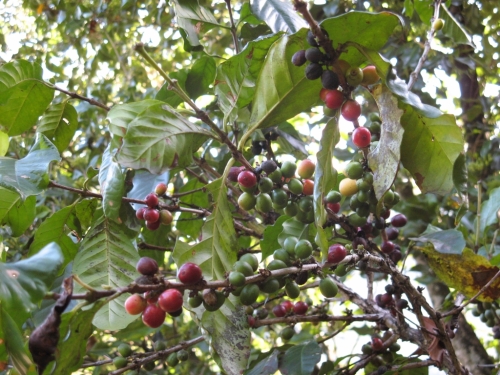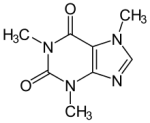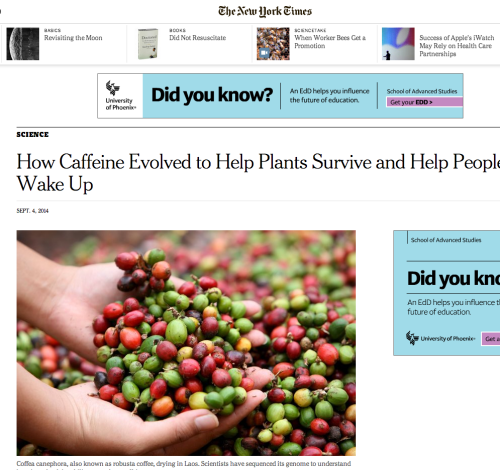Like many people around the world, I begin my every morning with a rather large cup of coffee. Caffeine – found in coffee, tea, mate, and chocolate – is the most widely consumed psychoactive substance in the world. So it was with great interest that I greeted the news, published in Science on Thursday last week, that an international team of scientists has sequenced the genome of the coffee plant, Coffea canephora.
Getting inside the coffee plant’s genome provides a biochemical view into the mechanism for creating caffeine (start with xanthosine, shave a bit off here, add a bit there and – voila – caffeine). But here’s the really interesting part – the coffee plant and the cacao plant produce caffeine in different ways. In other words, the biochemical pathway for producing this important molecule evolved more than once. Different evolutionary paths to the same end point. Biologists call this phenomenon convergent evolution. The independent evolution of similar features in different lineages (think wings in birds and bats, the camera eye in vertebrates and octopuses, the ability to glide in flying squirrels and sugar gliders). When this happens, it’s a good indication that the evolved adaptation is pretty useful. And, indeed, caffeine is a very useful molecule for these plants – it helps to ward off enemies, to attract pollinators (and keep them coming back for more), makes the soil immediately surrounding the plant inhospitable to competing plants, and it deters leaf-eating pests. For the rest of us, it provides that much-needed kick-in-the-pants each morning.
As excited as I was about this story, I was quite taken with the way different news groups elected to cover it:
Here’s the New York Times article:
Here’s the Washington Post article:
And here is Fox News coverage:
The thrust of the WaPo and Fox coverage is on the “mutation”, the possibilities for manipulation, and the slightly shadow-ey (the “quirk”) scariness of what might come next – genetically modified coffee??
It’s startling to see how few of the primary news channels covered what was most interesting about this finding. Namely, the intensely interesting evolution story and the way genomic tools help scientists solve problems and understand the mechanisms of life. Only Carl Zimmer, that noteworthy NYT Science journalist, included a clear and helpful description of the evolution element in his story. Sidebar: note the illustration choices in the three articles – the cup of coffee, the barista’s product. The New York Times at least shows the coffee beans but not a one of them show the actual plant, let alone the plant in its environment. How we report the news – the headline, the image, the story – these are all vital ingredients that help shape public perception and our attitudes toward science.






1) Possible it takes a scientist or at least someone who is at least not science-phobic– as the average journalist likely is– to recognize the convergent evolution angle? So instead of the average journalist choosing to use the sensationalist hook, perhaps their science-blindness leads them to go with a tried-and-true, universally understood hook by default?
2) Is there a convergent evolution science corollary for the recipient processor of the caffeine? That is, might different “users” of caffeine evolve different ways of processing it for different purposes?
Would like to think that a “science reporter” from a major news organization would have some science background. Very interesting thought about the recipients of the caffeine “using” it for different purposes. Sounds like a research question!